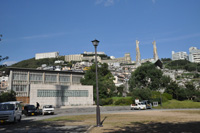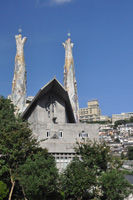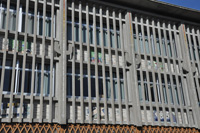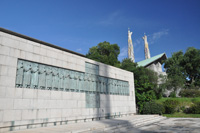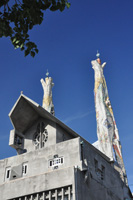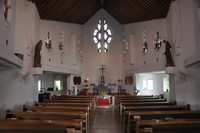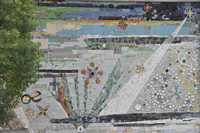 On August 15, 1549, St. Francis Xavier (later canonized by Gregory XV in 1622), Fr. Cosme de Torres, S.J. (a Jesuit priest), and Fr. John Fernandez arrived in Kagoshima, Japan, from Spain with hopes of bringing Catholicism to Japan. On September 29, Francis Xavier visited Shimazu Takahisa, the daimyo of Kagoshima, asking for permission to build the first Catholic mission in Japan. The daimyo agreed in hopes of creating a trade relationship with Europe.
On August 15, 1549, St. Francis Xavier (later canonized by Gregory XV in 1622), Fr. Cosme de Torres, S.J. (a Jesuit priest), and Fr. John Fernandez arrived in Kagoshima, Japan, from Spain with hopes of bringing Catholicism to Japan. On September 29, Francis Xavier visited Shimazu Takahisa, the daimyo of Kagoshima, asking for permission to build the first Catholic mission in Japan. The daimyo agreed in hopes of creating a trade relationship with Europe.
The shogunate and imperial government at first supported the Catholic mission and the missionaries, thinking that they would reduce the power of the Buddhist monks, and help trade with Spain and Portugal. However, the Shogunate was also wary of colonialism, seeing that in the Philippines the Spanish had taken power after converting the population. The government increasingly saw Catholicism as a threat, and started persecuting Christians. Christianity was banned and those Japanese who refused to abandon their faith were killed.
On February 5, 1597, twenty-six Christians – six European Franciscan missionaries, three Japanese Jesuits and seventeen Japanese laymen including three young boys – were executed by crucifixion in Nagasaki on the orders of Hideyoshi Toyotomi. Paul Miki and his companions were raised on crosses and then pierced through with spears on the site of the above photo.
St. Philip of Jesus Church was built in 1962 and is located at the end of Togitsu Road where the martyrs' march from Tokyo ended. St. Philip was a twenty-four year old Mexican who had studied at a seminary in the Philippines and stopped in Japan on his way home.
The architecture of the church was designed by Kenji Imai, who emulated the work of the Spanish architect Antonio Gaudi because of his belief that architecture can be an expression of faith. The church is decorated throughout with ceramic pieces of various types crafted in the towns along the route from Kyoto to Nagasaki. The church itself is not properly the shine of the twenty-six martyrs since most churches in the Nagasaki area have their own significant ways of honoring them.
As an expression of fanaticism, martyrdom is not generally spoken of in virtuous terms. Also, it is commonplace to abandon one's values for the sake of convenience or to never adopt personal standards which might interfere with one's comfort.
It seems that the underlying disposition of a martyr is a willingness to hold true to one's convictions amidst any difficulty, but to also advocate for one's convictions at times when it means becoming alienated. Death could be a logical conclusion of holding true to one's convictions, so why does martyrdom have to be associated with fanaticism?
